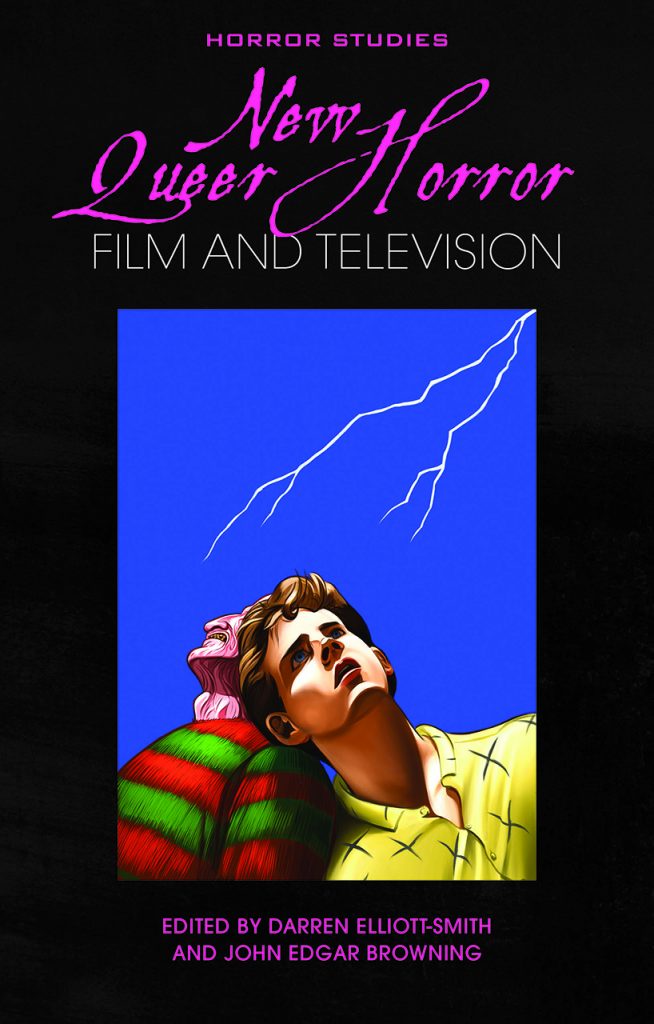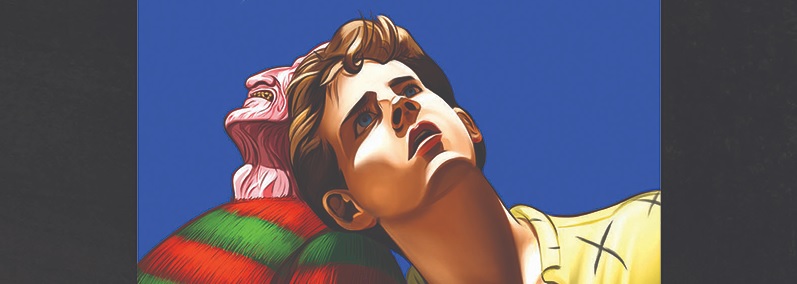Darren Elliott-Smith introduces New Queer Horror Film and Television, part of our Horror Studies series.

Horror scholars such as Robin Wood, Harry M. Benshoff, Ellis Hanson and Jack Halberstam have written extensively on depictions of the symbolic Other in the horror genre as representative of sexual difference, either in homosexuality or bisexuality. What is perhaps most notable about their considerations of the queer Other in the horror genre is that both the monster and the homosexual are permanent residents of the ‘shadowy spaces’ of metaphor. Indeed, Benshoff states that ‘homosexuality in horror is historically allusive … it lurks around the edges of texts and characters rather than announcing itself forthrightly’. Closeted queer horror films’ treatment of the sexual Other often results in representations of queerness that remain metaphorical.
In recent years, the embrace of queer horror in film and television has perhaps reached its crossover point in the 2019 release of the documentary Scream Queen: My Nightmare on Elm St, which examples the legacy of A Nightmare on Elm St 2: Freddy’s Revenge and the life of (then closeted) gay lead actor Mark Patton. Queer horror is itself coming out of the closet and has been analysed in some of my own recent work, such as Queer Horror Film and Television: Masculinity and Sexuality at the Margins (2016). Here, I provided a further insight into contemporary queer horror film and television texts, where the monstrous metaphor of queerness is rendered explicit by queer-identified directors and producers, and narratives and characters who are ‘out’ in their presentation of sexual difference.
This edited collection brings together queer interpretations of classic horror texts and analyses of seemingly canon-queer horror film and television titles. The collection builds further evidence for the shifting approaches to the representation of queerness in horror film and television, endeavouring to develop a clearer understanding of the subgenre’s changing aesthetics and themes. The central argument that binds the various contributions in the collection proposes that when monstrousness (as a metaphor for the threat that queerness poses to heteronormativity) ceases to be coded and instead becomes open, it then operates to turn the focus of fear upon itself, its own communities and subcultures. Queer horror therefore projects contemporary anxieties within queer subcultures. Texts range from an analysis of the queer cult appropriation and audience participation of the original The Rocky Horror Picture Show and recent television remake, The Rocky Horror Picture Show: Let’s Do the Time Warp Again (2016); a psychoanalytical and queer interpretation of Bryan Fuller’s Hannibal (2013–15); the juvenile queerness of films such as Black Swan (2010); Jack and Diane (2012); Låt den rätte komma in (Let the Right One In) (2008); and a consideration of queer monsters and mutating metaphors for ‘coming out’ as seen in American Horror Story: Coven, Teen Wolf (2011–17) and Being Human (2008–13), among others.
This anthology proudly develops an appreciation of New Queer Horror subjectivities that are wide in scope and take in a broad spectrum of gender and sexual identities that offer an enhanced understanding of an emerging sense of community in queer horror fandom and filmmaking.
Dr Darren Elliott-Smith is Senior Lecturer in Film and Gender at the University of Stirling and co-editor of New Queer Horror Film and Television (2020).


